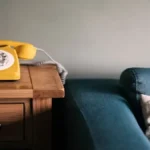Jumping spiders are fascinating little creatures known for their playful antics and impressive agility. These eight-legged wonders have a lot to offer pet enthusiasts, but providing them with the right environment is crucial for their health and happiness. A well-designed jumping spider enclosure not only ensures your arachnid thrives but also enhances your interaction experience.
Creating the perfect home for your jumping spider can be an exciting journey. Whether you’re a seasoned keeper or just starting out, understanding the essential features of an ideal enclosure will make all the difference. From innovative designs to proper sizing, every detail counts in crafting a safe haven for these curious critters.
Let’s dive into the top five essential features that will elevate your jumping spider’s living space from ordinary to extraordinary!
Creating the right enclosure for your jumping spider is more than just a decorative box; it’s about providing a habitat that mimics their natural environment. The first thing to consider is the design. A flat-top magnetic enclosure offers easy access and maintenance while preventing escape artists from finding their way out. This design allows you to observe your spider without disturbing its territory.
Size matters when it comes to enclosures. Jumping spiders require enough space to jump, roam, and create webs. A minimum size of 12x12x12 inches works well for smaller species, but larger varieties may need even more room. Providing adequate dimensions ensures they have enough area for exercise and exploration.
Material quality plays an essential role in safety and longevity. Opt for glass or high-quality acrylic enclosures that are sturdy yet lightweight. These materials are easier to clean compared to plastic options, which can scratch easily over time. Always ensure there are no sharp edges that could harm your spider during its antics.
Ventilation is another critical feature of any jumping spider enclosure. Proper airflow prevents mold growth and keeps humidity levels balanced, which contributes significantly to your pet’s health. Look for enclosures with mesh panels or small ventilation holes positioned strategically around the structure.
Accessibility cannot be overlooked either; ease of access makes feeding and cleaning simpler tasks rather than daunting challenges! Choose designs with sliding doors or removable lids so you can interact with your spider comfortably without causing stress.
Think about adding accessories for enrichment within the enclosure itself! Elements like climbing branches, silk plants, or various forms of substrate not only enhance aesthetics but also provide opportunities for mental stimulation—crucial aspects of keeping these intelligent creatures engaged in their surroundings.
These features together contribute significantly toward creating a thriving environment where your jumping spider can flourish.
Flat-Top Magnetic Enclosure Design
When it comes to setting up a jumping spider enclosure, a flat-top magnetic design offers unique advantages. This type of enclosure not only looks sleek but also provides practical benefits for both the spider and its caretaker.
The flat top allows for easy access when feeding or cleaning the habitat. You can simply lift off the top without disturbing your spider too much. This minimizes stress and keeps your little friend feeling secure in their environment.
Magnetic closures are another game changer. They ensure that your enclosure stays securely shut while still providing effortless access. A simple tug is all you need to open it, making daily maintenance a breeze.
This design also enhances visibility. With no bulky lids obstructing the view, you can enjoy observing your jumping spider as they explore and interact with their surroundings. You’ll gain deeper insights into their behavior and quirks over time.
Moreover, flat-top enclosures often have more vertical space than traditional designs. Jumping spiders love to climb! The extra height gives them room to exhibit natural behaviors like web-building and hunting, ensuring they remain active and engaged.
Another benefit is temperature regulation. Flat tops usually allow for better air circulation compared to dome-shaped lids which can trap heat inside easily. Optimal temperatures contribute significantly to maintaining a healthy habitat for your arachnid companion.
Styling options abound with this modern enclosure type. They come in various sizes and finishes that will seamlessly blend into any home decor while keeping functionality at the forefront of design choices.
Proper Sizing and Dimensions
When it comes to a jumping spider enclosure, size truly matters. An appropriate habitat allows these fascinating arachnids to thrive and display their natural behaviors. Choosing the right dimensions is crucial for ensuring your spider feels comfortable and secure.
Jumping spiders don’t require excessively large enclosures, but they do need enough space to explore and hunt. A general guideline is a minimum of 12x12x12 inches for one jumping spider. This gives them room to roam without feeling overwhelmed in an expansive environment.
The height of the enclosure plays a significant role as well. Jumping spiders are agile climbers and love vertical spaces. Including vertical elements can mimic their natural habitat while providing enriching opportunities for movement.
Make sure that there’s ample floor space too; this helps facilitate hunting behavior and exercise when your spider pounces on prey. It allows them room to establish territories or hideouts as they would in nature, which enhances their overall quality of life.
Avoid choosing an enclosure that’s too small, as cramped conditions can lead to stress or health issues over time. If you plan on housing multiple jumping spiders together, consider larger dimensions with separate areas where each spider can retreat if needed.
Remember that young spiders will grow quickly, so it’s wise to anticipate their future needs when selecting an enclosure size. Keeping them in a smaller container may work temporarily but could become problematic as they reach maturity.
Think about the type of substrate you’ll use inside the enclosure since it contributes directly to how much usable space your jumping spider has at its disposal. Opt for materials like coconut fiber or moss that encourage climbing while also being safe for your pet’s delicate legs.
Material Quality and Safety
Choosing the right materials for your jumping spider enclosure is crucial. The safety and well-being of your spider depend on the quality of these materials. Opting for durable, non-toxic substances ensures that your pet can thrive in a secure environment.
Acrylic and glass are popular choices for enclosures. Both offer excellent visibility while providing a sturdy barrier against potential escapes. Unlike plastic, which may degrade over time or release harmful chemicals, glass and acrylic maintain their integrity longer. This longevity translates to better safety for your jumping spider.
It’s essential to ensure that any adhesive used in creating or assembling the enclosure is also safe. Some adhesives emit volatile organic compounds (VOCs) that can harm both spiders and humans alike. Always select products labeled as non-toxic or specifically designed for animal habitats.
Consider the thickness of the material too; this impacts durability significantly. Thicker panels resist cracks or breaks more effectively than thinner ones during handling or cleaning processes. It’s worth investing in higher-quality options upfront rather than risking damage down the line.
Ensure all edges are smoothed out properly to prevent injuries during exploration within its habitat. Sharp corners pose risks not only at installation but also when your spider navigates its surroundings daily.
When designing an enclosure, think about escape-proof features as well—especially with jumping spiders known for their agility! Tight-fitting lids made from high-quality mesh allow ventilation without compromising security against escape attempts.
Remember to inspect regularly; even small wear-and-tear can lead to significant issues later on if neglected over time! Keeping tabs on condition helps you catch problems early before they escalate into serious threats to your little arachnid companion’s home life.
Ventilation and Accessibility
Ventilation is a critical aspect of any jumping spider enclosure. These little creatures thrive in environments that mimic their natural habitat, which includes proper airflow. Stale air can lead to moisture buildup, creating an unhealthy environment for your spider.
Good ventilation helps regulate temperature and humidity levels within the enclosure. Jumping spiders are sensitive to extreme conditions. If the enclosure is too humid or poorly ventilated, it can lead to mold growth or health issues for your pet.
When designing your jumping spider setup, consider mesh screens or vents incorporated into the sides or top of the enclosure. This allows fresh air to circulate while keeping unwanted pests out. Remember that balance is key; too much airflow might make them feel exposed.
Accessibility should also be at the forefront when planning your enclosure design. Jumping spiders are curious by nature and require space to explore their surroundings comfortably. An accessible layout encourages their natural behavior and keeps them entertained.
Think about how you will interact with your spider as well. A door or opening that’s easy to reach makes feeding and maintenance tasks simpler without causing stress for your pet. Ensure you have enough room for tools like tweezers or small dishes if needed.
Consider positioning elements within the enclosure wisely so they remain easily reachable during upkeep sessions yet don’t obstruct pathways where your spider likes to roam freely. You want a harmonious balance between accessibility and comfort in their living space.
Maintaining cleanliness becomes easier with thoughtful design choices around ventilation and access points. Regular cleaning prevents bacteria buildup while ensuring a healthier environment overall for these fascinating arachnids.
Added Accessories for Enrichment
Creating a thriving environment for your jumping spider goes beyond just providing the basics. Adding accessories can greatly enhance their habitat and overall well-being. These little creatures are naturally curious and require stimulation to keep them engaged.
Consider adding various climbing structures made from safe materials, such as branches or cork bark. Jumping spiders love to explore vertical spaces, so incorporating different heights will encourage natural behaviors like hunting and web-building.
You might also want to introduce live plants into the enclosure. Not only do they add aesthetic appeal, but they provide hiding spots and reduce stress levels in your spider. Just make sure any plant you choose is non-toxic.
Additionally, small items like rocks or pebbles can create microhabitats within the enclosure. This helps mimic their natural environment while offering places for them to hide or rest.
Feeding stations are another great accessory option. They help keep food organized and ensure that your jumping spider has easy access to its meals without creating a mess in its living space.
Consider using enrichment toys designed specifically for arachnids, such as small tunnels or platforms that challenge their agility and hunting skills.
By thoughtfully selecting these added accessories for enrichment, you not only cater to your jumping spider’s instincts but also create a more dynamic living atmosphere—one where curiosity thrives alongside comfort.











